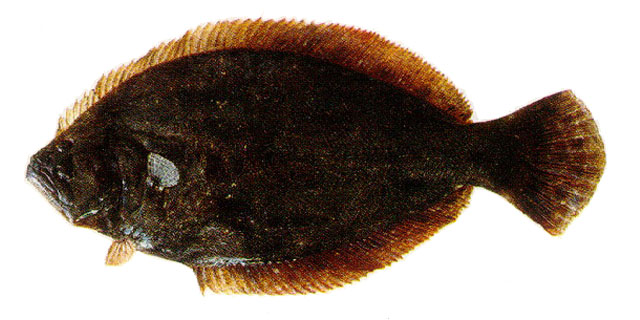| Paralichthyidae (Large-tooth flounders) |
| 83 cm TL (male/unsexed); max. reported age: 11 years |
|
demersal; brackish; marine; depth range 1 - 45 m, oceanodromous |
| Southwest Atlantic: Rio de Janeiro, Brazil to at least Mar de la Plata, Argentina. |
|
Dorsal spines (total): 0-0; Dorsal soft rays (total): 71-77; Anal spines: 0-0; Anal soft rays: 52-59; Vertebrae: 35-36. Body shape oval, with the greatest breadth 2.5 times in length. Eyes are on the left side, close together, and equally in advance. Teeth are in a single series, sharply pointed. Dorsal fin origin aligned with eyes. Lateral line arched over the pectoral fin. Eye side of the body slightly rough, with finely ciliated scales (Ref. 3157). |
| Populations are found in shallow coastal marine waters (Ref. 127691). They enter coastal lagoons (Ref. 36453). Nursery grounds are found in estuaries, coastal lagoons and brackish surf waters (Ref. 127691). Adults feed on pelagic and benthic species of crustaceans (penaeids and brachyurans), and lesser important fishes (Ref. 43588). Juveniles mainly feed on plolychaetes (Ref. 127691). |
|
Data deficient (DD); Date assessed: 06 December 2019 Ref. (130435)
|
| harmless |
Source and more info: www.fishbase.org. For personal, classroom, and other internal use only. Not for publication.

